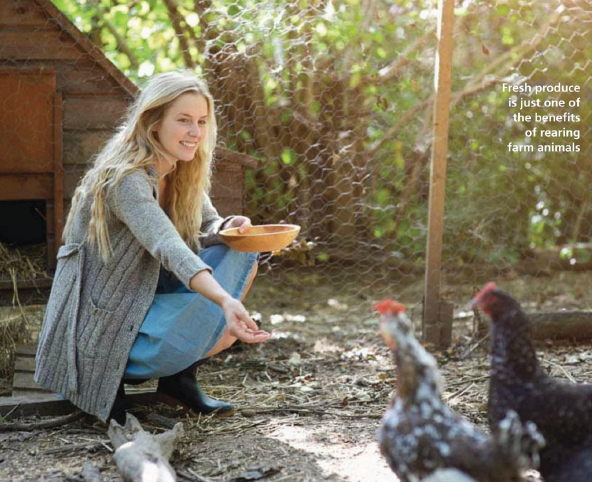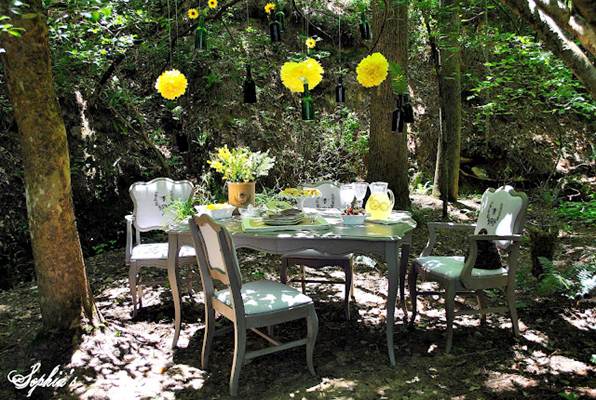Enjoy the good life

Fresh produce is
just one of the benefits of reading farm animals
Our pick of the best back garden animals and insects
o Chickens
Cheap to buy, easy to look after
and you’ll get to enjoy very fresh eggs.
Three hens will supply you with
eggs all year. Light Sussex, Rhode Island Red and Brown Leghorn breeds are good
layers and cost from only $ 15.6 each.
A chicken will eat about 120g of
feed per day; a 10 kg bag will cost around $ 14.
You’ll need a least 2.5 sq metres
of floor area per bird, a perch, nesting box and fox-proof run. Budget at least
$ 234 for a purpose-built coop.
o Pigs
Fun, social animals that are
happiest in pairs.
A pedigree piglet, or weaner,
takes up to 16 weeks to reach maturity and costs aroung $ 93.6.
Two pigs will need at least half
an acre of well-fenced land, and be prepared for a mud bath!
Feed is expensive. It costs
around $ 124.8 – $ 156 to feed a young pig for four months.
Pigs need constant access to
clean drinking water and it is illegal to feed them waste food from you
kitchen, including vegetable scraps.
o Goats
Highly entertaining and a source
of milk.
You’ll need tall fences and a
strong tether because they can leap like deer and will eat anything and
everything!
Goats can produce around four
pints of fresh milk a day.
It’s not all about milk. The
Angora produces mohair; the Anglo-Nubian can be bred for meat; while the Golden
Guernsey makes a great per.
Try ukgoats.co.uk for sales, and
budget $ 78 - $ 156, plus around $ 1.5 per day for food, hay and bedding.
o Bees
Delicious honey aside, keeping a
hive can be a rewarding hobby, especially as bee numbers are in decline.
A beehive can produce as much as
20 – 40lb of honey in one year.
Bees thrive in urban areas, and a
flat roof is all the space you need. However you will have to learn the ropes
before investing – visit the British Beekeepers’ Association to find a course
near you.
There are no restrictions on
keeping bees. You can have them in your back garden, but it’s best to speak to
your neighbours first.
A hive with bees costs from $ 468, while protective suits
cost around $ 156.
The new Energy Label
explained
Previously the top energy label on white goods was ‘A’ but
now you’ll see A+, A++ or an A+++. The new label also shows total energy
consumption (kWh), noise levels on some appliances and water consumption. Look
for it on fridges, freezers, washing machines, tumble dryers, washer-dryers,
dishwashers, light bulbs, electric ovens and air conditioners. By the end of
the year TVs will also be covered. For details type Defra Energy Label into
Google.
Garden furniture
revamp

Get your table and
chairs ready for the sunshine
If you like to get straight out onto the patio once the
barbecue season kicks off, now is a good time to start getting your table and
chairs ready for action.
·
Cane furniture: Dust or vacuum using the using the upholstery
nozzle on a low setting and remove any dried-on dirt by wiping with a clean,
damp cloth.
·
Cast and wrought iron: Rub down with wire wool to remove flaky
paint or rust and expose the bare metal. Apply a metal primer and then apply
rust-resistant metal paint.
·
Plastic or cast aluminium: Hose down with water to get rid of
muddy marks. Remove more stubborn stains with a mild solution of household
bleach.
·
Durable wood, such as teak, oak and mahogany: Wipe with a damp
cloth to remove grime. Treat with a layer of teak oil or similar to bring out
the colour and shine.
·
Softwood furniture, such as pine, ash and beech: Lightly sand and
apply a proprietary wood preserve such as Cuprinol or Ronseal to give it extra
defence against the elements. This needs to be done every couple of years to
keep softwood looking its best.